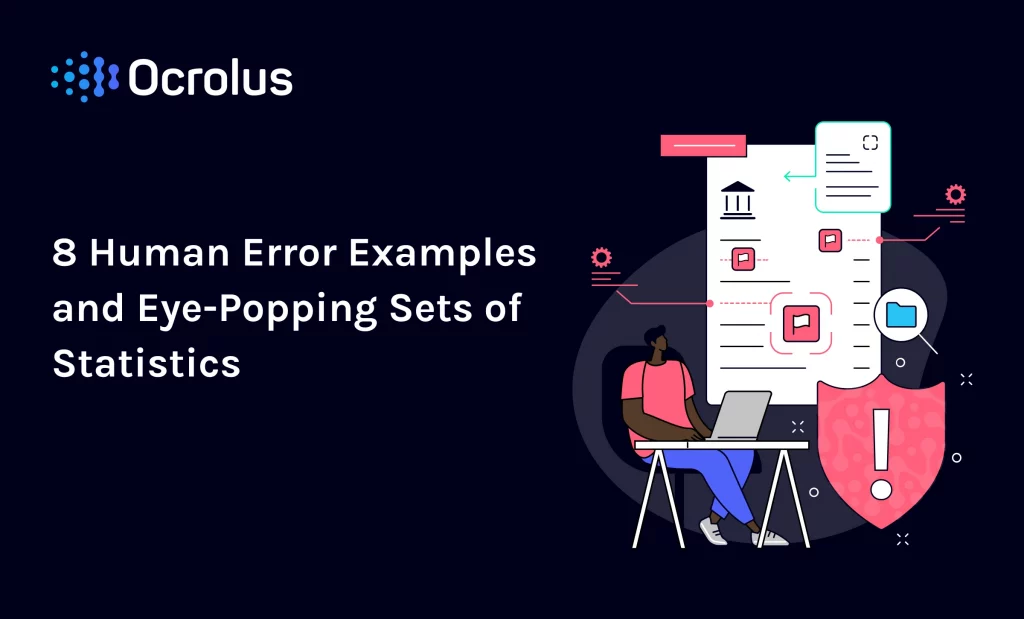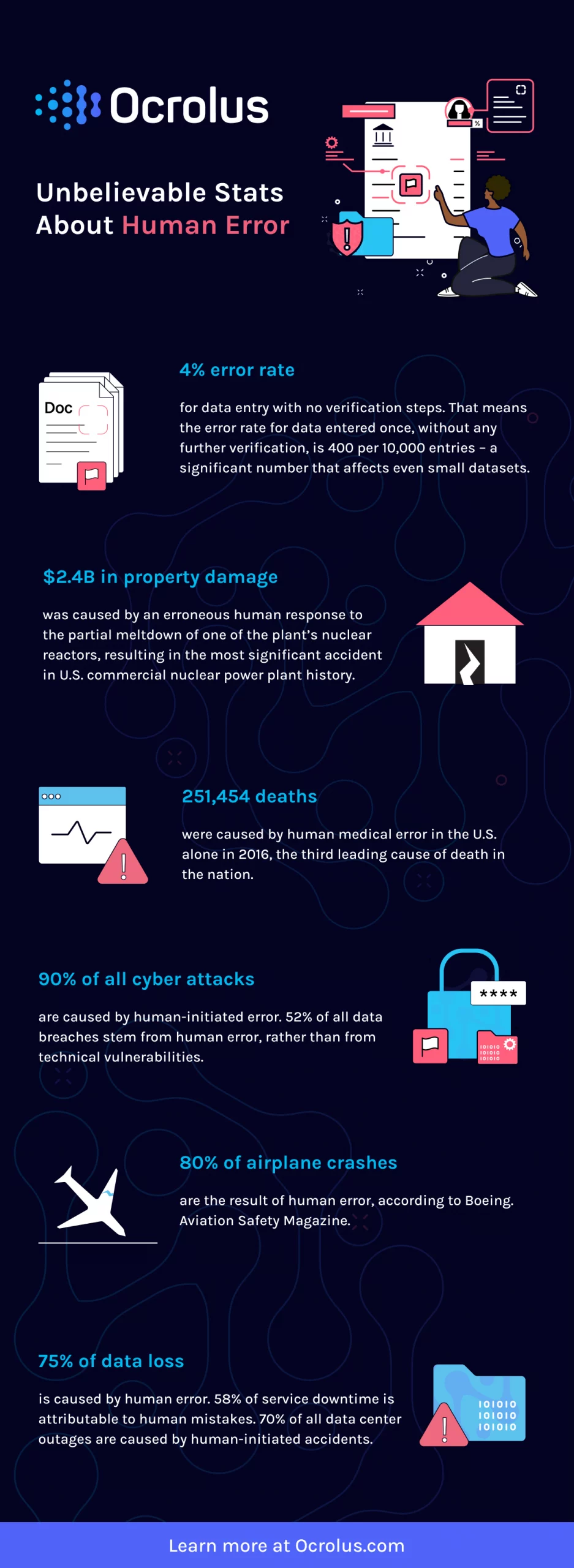This website uses cookies so that we can provide you with the best user experience possible. Cookie information is stored in your browser and performs functions such as recognising you when you return to our website and helping our team to understand which sections of the website you find most interesting and useful.
8 Human Error Examples and Eye-Popping Sets of Statistics

On September 23, 1999, one of the greatest human errors examples in modern history made headlines across the world.
The Mars Climate Orbiter was spinning in orbit around the red planet, beginning its mission to collect data on Earth’s closest neighbor. But the Climate Orbiter went radio silent just as it was starting to orbit Mars.
As minutes of silence bled into hours, NASA technicians realized that their worst fears had come true. The Mars Climate Orbiter, all $125 million of it, was gone, likely destroyed in the punishing atmosphere of Mars.
After a comprehensive investigation, NASA found the probe failed because some of its software used United States customary units instead of the metric system.
This crucial error was somehow missed by hundreds of NASA experts, even though your average high school physics student could have diagnosed the problem.
This is just one of many human error examples at play. But every process that involves humans is inherently vulnerable to error, and that’s why sometimes bad news early is good news.
Here are eight sets of human error examples and human error statistics that will make your eyes pop.
8 Unbelievable Sets of Human Error Examples and Statistics
1. Data Entry Error
Data entry, with no verification layer steps, has an error rate as high as 4%. That means the error rate for data entered once, without any further verification, is 400 per 10,000 entries – a significant number that affects even small datasets.
2. The Three Mile Island Incident
The Three Mile Island Incident, the most significant accident in U.S. commercial nuclear power plant history, was caused by an erroneous human response to the partial meltdown of one of the plant’s nuclear reactors. The accident caused $2.4 billion in property damage.
3. Human Medical Error
251,454 deaths were caused by human medical error in the U.S. alone in 2016, the third leading cause of death in the nation. Doctors perform 500 incorrect surgical operations each week. 50 newborn babies are dropped at birth by doctors everyday.
4. 89th Academy Awards
At the 89th Academy Awards, a PricewaterhouseCoopers accountant broke protocol and gave out the wrong awards slip for Best Picture. The cast of La La Land was hurriedly rushed off the stage mid-awards speech, in a chaotic scene that was watched by millions across the world.
5. Cyber Attacks
90% of all cyber attacks are caused by human-initiated error. 88% of all data breaches stem from human error, rather than from technical vulnerabilities. Consequently, the same study also found that “employees are unwilling to admit to their mistakes if organizations judge them severely.”
6. Airplane Accidents
Boeing says that 80% of all airplane accidents are the result of human error. Boeing also estimates that maintenance errors cause:
- 20 to 30 percent of engine in-flight shutdowns at a cost of US$500,000 per shutdown.
- 50 percent of flight delays due to engine problems at a cost of US$9,000 per hour.
- 50 percent of flight cancellations due to engine problems at a cost of US$66,000 per cancellation.
7. Data Loss
75% of data loss is caused by human error. 58% of service downtime is attributable to human mistakes. 70% of all data center outages are caused by human initiated accidents.
8. The Sinking of the Titanic
On April 15th, 1912, the RMS Titanic sank in the North Atlantic Ocean after Captain Edward Smith misjudged the distance between an iceberg and the ship’s hull. Once deemed “unsinkable,” the ship crashed to the shock of the world, causing 1,517 deaths.

What Causes Human Error?
There are many natural and environmental factors and stressors that can cause human error. A few examples of factors that contribute to human error include emotional stress, anxiety, fatigue, distractions, complex documentation, workload, time pressure, poor communication, and much more. However, there are ways to mitigate risk and limit human error.
The Path Forward: Limiting Human Error
Human error examples and stats are often mind boggling. So what can be done to mitigate costly human mistakes, and how can we solve for the cost of human errors?
Verification steps, automation, machine learning, and artificial intelligence are fundamentally improving the accuracy of work products and processes across many sectors.
In some cases, these technologies and methods are being used in tandem with human labor to minimize human error rates. A study by UNLV found that humans empowered by automation technology are over twenty times more accurate at data verification than humans alone.
Human error isn’t going anywhere. But with technological innovation, employees, companies, and organizations are learning how to minimize its impact. And maybe that’s how organizations will avoid the next $125 million dollar mistake.
Ready to find out how you can minimize costly human errors through document automation? Book a demo with Ocrolus to find out.






